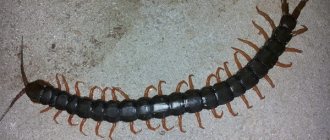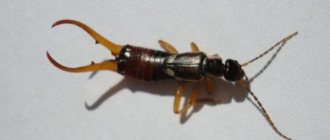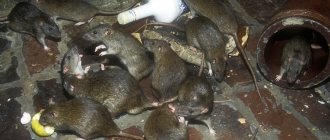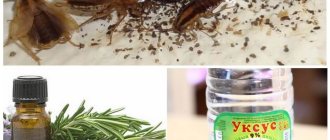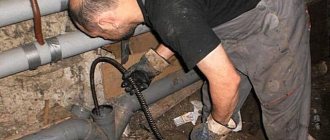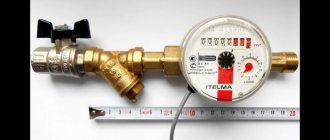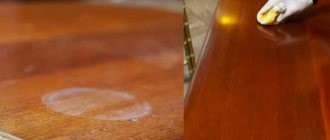According to sanitary standards, an outdoor toilet is located away from the house. When the cesspool overflows, the unpleasant odor reaches the living space, and with it the number of insects increases. Caring for your country toilet is mandatory, and you should not wait until the sewage reaches the upper limit. Using the toilet will become not only inconvenient, but also dangerous.
How to determine when it's time to cleanse
Cleaning the toilet outside should be done in a timely manner. If the work is done manually, then it is better to start it at the end of the summer season, even if the volume of contents is small, you should not wait several years. Chemical and bacterial agents are used annually. For those who call a sewer truck for pumping, the signal should be a hole that is more than half full.
Important! These recommendations cannot be ignored. A toilet that is uncleaned for a long time is an ideal environment for the proliferation of harmful microbes, attracts rats, and releases toxic gases. Their constant inhalation can lead to poisoning. Garden plantings absorb harmful substances from the air and soil. The stench creates discomfort for site owners and their neighbors, and this is a serious nuisance.
Disposal using chemicals
Biological products are good for everyone, except for one peculiarity: they are not able to work when the air temperature drops below zero. They will save you from problems in the summer, but you will not be able to clean the toilet outside in a private house in the winter. In the case of permanent residence, chemical preparations with the following advantages seem more practical:
- They effectively handle waste processing at any temperature.
- Their work does not depend on external factors: the presence of household chemicals, medical antiseptics, water hardness.
- Chemical additives eliminate unpleasant odors.
The use of chemical antiseptics has the following negative effects:
- Chemical cleaning releases vapors and gases that have a negative impact on the environment. Wastewater treated in this way is not suitable for any further use (irrigation or fertilization).
- Water with added chemicals, once in the soil, causes the death of beneficial microorganisms. Decomposition products must not be allowed to enter the soil and underground aquifers. The remaining sludge is disposed of at wastewater treatment plants.
- If the cesspool structure contains parts made of metal or some types of plastic, corrosion begins on them.
- Some drugs are neutralized by household chemicals.
- Chemicals that can decompose organic matter are divided into the following types:
- Formaldehyde. A cheap chemical that was the main method of disinfection until its carcinogenicity was discovered. There are fewer and fewer people wanting to use it at home.
- Ammonium salt compounds. Quaternary ammonium salts are an effective way to neutralize waste and odors, but, due to the negative impact on health, they are recommended for use only in sealed storage containers.
- Nitrate oxidizers. Unlike previous options, nitrate oxidizers are safe for humans. They do not recycle, but dissolve waste; the result is a homogeneous mass that is easier to pump out. Their only drawback is their high cost.
- Bleaching powder. A common disinfectant that is non-toxic to humans, but has carcinogenic properties. It must be used with extreme caution.
How to manually clean a country toilet
Manual cleaning involves removing the contents using buckets with rope or other suitable containers. The bucket is lowered down and the slurry is scooped up. The hardened substance is removed with a shovel. The waste is mixed with soil, thereby fertilizing the soil, or buried deep somewhere on the border of the garden.
The manual method is the most unhygienic and unpleasant. Everyone who resorts to it must protect their hands and face (you will need gloves, a mask or a respirator), wear high rubber boots, and at the end be sure to change clothes and take a shower. Sometimes you have to completely immerse yourself in a hole, and in this case you cannot do without a chemical protection suit. This is one way to clean an outdoor toilet in a private house without pumping.
Cleaning cesspools and toilets - how to understand that the pit needs to be cleaned
A cesspool is usually represented by a sealed tank. This means that all wastewater is mostly retained in the tank. To prevent the contents from overflowing beyond the walls, inspection wells or doors are provided. Pumping occurs through them. The acceptable filling rate is considered to be ⅔ of the total volume.
In addition to visual analysis of the situation, there are three signs indicating that the reservoir is full:
- the flow of water from plumbing equipment (sink, bathtub, toilet) slows down;
- gurgling sounds are heard in sewer pipes;
- a characteristic smell appears in the house and yard.
Partial liquid seeps through the bottom and walls and goes into the ground.
But the ducts become clogged with solid particles, so you need to periodically monitor the fullness of the pit and clean it in a timely manner. There may be an obstacle to the natural filtration of wastewater in the form of silt formations. The reason for their appearance is incomplete or rare removal of sediment from the cesspool.
Using a fecal pump
Another mechanical option for cleaning a toilet in the country with your own hands is to use a drainage pump. The main condition is sufficient power to pump out feces. It will be necessary to provide a reservoir where waste will be drained, transportation and a disposal site. Some owners of private farmsteads drain the contents of cesspools in forest belts or near water bodies, which is strictly prohibited.
What to do if the country toilet is overcrowded and you can’t cope with the task yourself? Call the vacuum cleaners. They have special equipment at their disposal (a vacuum pump, cutting mechanisms for grinding debris in the form of stones and pieces of wood) and a tank for transportation. The cost of services is significant, but in an emergency situation, when the toilet tank is full, and the question of how to clean the country toilet becomes more than urgent, it makes sense to invest in solving the problem.
Cleaning not possible: alternative
There are situations when cleaning an earthen toilet pit is either difficult or even impossible (the old structure is dilapidated and threatens to collapse). In this case, a more correct solution would be to dismantle the building, fill the cesspool and move the toilet to a new location. The best materials for backfilling are a mixture of peat, sawdust and earth. The use of sand, construction waste, broken bricks, ash, etc. will make this area unsuitable for gardening work.
If the building is dilapidated, it is worth changing the force of habit and moving the toilet to a new place
If possible, the pit should be pre-treated with a bioactivator, then a layer of a mixture of bulk materials should be laid. Lay bundles of reeds, bush branches or garden tree trimmings on it, then again a layer of bulk materials. This will prevent the danger of falling into an old hole. In a few years, it will be possible to grow cultivated plants in the place of the cesspool.
Cleansing using traditional methods
Since ancient times, plants have been used in villages to remove sewage from toilets, and our grandfathers knew how to clean a sewer pit in a private house using peat and sawdust.
Tomato tops
The leaves and stems of tomatoes left after pinching are thrown into the toilet in order to get rid of the stench. The tops destroy fly larvae and repel adult flies.
Mint with basil
Spicy herbs have a deodorizing effect due to the high concentration of essential aromatic substances. Mint and basil are used most often.
Nettle
Nettles are placed in the toilet in small bunches once a week to combat the smell. The plant accelerates the process of decomposition of sewage.
Peat
One of the properties of peat is to neutralize stench. The dry matter absorbs odor and mixes with sewage, making it easier to compost.
Coniferous sawdust
The use of pine sawdust allows you to purify the air and make the contents of the pit more viscous for subsequent manual cleaning.
Cleaning the pit with folk remedies
The question often arises of how to clean a cesspool without pumping using folk remedies. This is especially true when the tank is small. To pump it out, renting a car and sewage disposal equipment is unreasonably expensive.
Here are some solutions from resourceful villagers and summer residents:
- Wood sawdust. The mass of natural fibers perfectly absorbs water, gases and partially odors. Phytoncides contained in conifers help neutralize the effects of pathogenic bacteria.
- Nettle. The main active ingredient here is oxalic acid. It enters into a chemical reaction with organic matter, due to which wastewater is disinfected.
- Tops, mint and basil. The first include shoots of potatoes, peppers, and eggplants. They have antiseptic properties, eliminate odors, as they slow down the development of microorganisms.
To achieve greater efficiency, you need to use sawdust of a minimum size.
Natural remedies contribute to the formation of safe raw materials for compost. But they do not completely exclude tank cleaning. If the liquid partially leaves and evaporates like a gas, then solid residues remain. You can remove them yourself by scooping out the contents or hire a car.
For preventive measures to prevent sewer pipes from becoming coated with grease, you can purchase “mole” or other chemicals. Another option involves using baking soda and vinegar. The mixture additionally eliminates odor.
How to avoid the formation of growths on the walls of the pit
Build-ups form from silt and settling fats. Prevention of this phenomenon is that the walls and bottom need to be cleaned and rinsed with water after removing the contents. There are also biological and chemical types.
Available drugs
One of the effective means for caring for septic tanks is called “Doctor Robik 309”. This is a professional composition, the action of which is based on the activity of microorganisms. Result: dissolution of fats and organic matter, elimination of odor. The liquid is shaken and poured into the toilet or pit once a year. It is not advisable to use water during the day. You can empty the drain tank in advance.
The Polish biological activator Septifos Vigor in powder form can be a regular means of reducing the volume of wastewater. The calculation is based on a dose of 25 grams per cubic meter. meter. The toilet is backfilled once every 10 days. A 1.2 kg package lasts approximately 7 months. The first portion should be double. This way it will be possible to clean the pit only after 10-12 years.
Use of biological products
Recently, biological preparations for outdoor toilets have become popular. They contain living microorganisms (for example, saprophytic flora in combination with enzymes) that promote rapid decomposition of masses, as well as paper, small litter, bottom sediment, and hardened crust.
Briefly about the main thing
Owners of outdoor toilets have the opportunity to choose one or another cleaning method based on its effectiveness, cost and convenience in each specific case. Traditionally, calling a sewer truck or doing manual cleaning on your own is common.
Alternative methods of wastewater treatment include the use of bio- and chemicals. All of them successfully cope with waste recycling, but the conditions of their use and the results of their activities are somewhat different. Some measures turn out to be complex and costly, but you don’t have to resort to them often, which somewhat compensates for the hassle.
Chemical reagents
Chemistry is resorted to in extreme cases. It is better to prefer any other method of cleaning the closet without pumping or to spend money on sewage disposal, but when in winter the tank is overfilled with waste, it will not be possible to eliminate the accident without chemicals. Add the reagent strictly according to the instructions.
The substances completely liquefy the frozen and dried mass, after which it is much easier to remove. The waste becomes toxic due to the formaldehyde content and is not suitable for composting or digging, so you will have to think about its safe disposal. Among the harmless components for chemical cleaning are products based on nitrate oxidizing agents.
DIY cleaning methods
When cleaning the cesspool yourself, you need to take care of a respirator with a filter element. It will prevent poisoning from toxic fumes and gases. The use of special preparations with a bacterial or chemical environment allows you to delay the cleaning process, get rid of the smell, and protect the environment in the septic tank. But drains still have to be removed periodically.
Mechanical, description
Initially, cleaning the cesspool was carried out with a bucket on a fairly long handle. Subsequently, the wastewater was more often used for home production of fertilizers through compost. So today you can save on technology, equipment or special medications. But there is a risk of gas poisoning, loss of consciousness from ammonia and hydrogen sulfide. If the container is large, you will have to purchase sealed workwear with shoes and seek help due to the labor-intensive nature of the event.
If the site allows, you can change the location of the waste collection point. But before burying the old hole, the contents still need to be removed. This approach is relevant in case of heavy siltation of the bottom and walls.
To speed up the process of cleaning the septic tank yourself, you can use pumping equipment. There are models with automatic shut-off to avoid idling. Another option is with a built-in chopper. This approach is effective and therefore popular despite the energy costs. The third option is to call a sewer truck.
Biological
This method involves the addition of bacteria and compliance with specific conditions. The effectiveness of the method lies in the conversion of wastewater into water and organic sludge. Results become noticeable within 1-2 weeks. The action must be accompanied by warm weather (over 7 degrees Celsius). To activate the process, sugar and yeast are added and a constant flow of water is ensured.
The advantages of biological products include:
- no odor;
- simplified cleaning;
- Possibility of using sludge for compost.
If the bottom is of a drainage type, then you will only need to remove organic residues. The liquid will freely go into the ground. This allows you to delay cleaning the pit.
Additional Information! In cold weather, microorganisms do not perform their task. The same thing happens due to household detergents, powders, hygiene products, and compositions containing chlorine. But there are bacteria that can cope with dissolved toilet paper.
The release form of the drugs is different. Some must first be prepared for use. More often this is dilution of granules or powder in clean water. Gels and liquids can be poured into the pit immediately.
Chemical
Chemicals can be used for a cesspool for general collection of wastewater from the toilet, bathroom, kitchen, and bathhouse. Based on their composition, materials are divided into three groups:
- Nitrate oxidizer containing caustic soda. Shows inertness to household chemicals. The high price is justified by the effectiveness and safety when dosages are observed. It is used, among other things, for preventive cleaning of sewer pipes.
- Ammonium salts. In terms of effectiveness, it is inferior to analogues; it does not cope with detergents.
- Bleach or formaldehyde. Effective means, but they have a negative impact on human health when they get into fertile soil. May contain toxic substances. These facts significantly limit the demand for this group of chemicals.
The result of using liquids of the second type is unacceptable for secondary use. The contents are subject to mandatory disposal.
How to dispose of an outdoor toilet
It is not always possible to return the closet to its previous appearance. The pit was too flooded, its walls collapsed, cleaning was not carried out for a long time, the cabin became unusable - all this serves as a basis for the disposal of the structure. How to clean a country toilet quickly and safely? Experts are sure that only if a certain procedure is followed.
Dismantling tools
The set of tools depends on what materials the building is made of. It is more difficult to disassemble a cinder block booth than a wooden structure. In any case, a crowbar, axe, saw, sledgehammer and nail puller will come in handy. To dismantle the masonry, you will have to use a lot of force and use a hammer drill.
How to choose and how biological products work
Biological products produced for the treatment of rural sewerage are colonies of living bacteria. They include:
- aerobic, anaerobic bacteria;
- organic catalysts;
- enzymes.
When choosing a cleaning product, it is recommended that you read the instructions for each product. When using, pay attention to the temperature range and the volume of the pit or tank.
Using bacteria to clean the toilet
Sewage bacteria are special cultures that process organic matter. They can be produced in dry form (powders and tablets) or liquid. Bacteria sleep in the product. To activate them, you need to perform certain actions prescribed in the instructions.
To work effectively, the antiseptic must be stored correctly. The drug should not freeze. The effectiveness is also affected by the expiration date. The older the product, the more likely it is that the bacteria have died.
The septic tank is the most common place for biological products to work. Only the amount of the drug and the method of providing it to the place of work change. Such products can often be used for apartment sewerage.
Features of the use of drugs:
- The powder product is diluted with water.
- The liquid product should not overheat, but it cannot tolerate low temperatures either. The method of use is simple - the required dose must be poured into the cesspool.
- Before use, the tablets simply need to be removed from the shell and thrown into the toilet.
After such measures, the unpleasant odor of feces and the volume of waste are reduced. Recycling wastewater will turn solid organic matter into liquid and the air will escape. There will also be fewer flies. The drug also affects their larvae.
How often should you clean
Standard structures with a volume of 1.5-2 cubic meters do not need cleaning for up to 10 years. You can remove waste once a season, so the process is faster and not so difficult. With the mechanical method, fecal matter is pumped out depending on the fullness of the pit.
You can clean your dacha building in different ways. Owners of dachas and private houses independently decide which methods are best to use in order to create comfortable conditions and not harm the environment.
Source
How to arrange ventilation
To prevent the appearance of an unpleasant odor, it is recommended to provide an exhaust hood even during the construction of the toilet. If it is not there, you should put a pipe in the cesspool box. After which she should be taken outside. This can be done through the roof.
It is important to ensure that the outermost part is located 2.5-3 meters from the ground surface. The insertion area should be covered with sealant, and the pipe fragment above the roof should be painted black
When exposed to heat, the pipe will begin to heat up. Thanks to this, it will act as a hood.
The pit should reach a depth of 2 meters. It is recommended to make it from waterproof material. It is also permissible to organize natural ventilation in the toilet. To do this, it is recommended to make a hole near the floor or a window.
Video
How to clean a cesspool at home, properly care for an outdoor toilet, where to dispose of the contents using bioactive and chemical preparations, you can learn from the videos presented: An
avid gardener, beekeeper and gardener, partial to dogs and cats and other pets. Spends spring, summer and autumn at the dacha and experiments in the garden beds. Loves to communicate with “advanced” summer residents and find something new and useful for himself. Collects the best methods of preparation and recipes for preparing dishes from products grown with your own hands. He is happy to share his discoveries and secrets with readers.
Found a mistake? Select the text with the mouse and click:
The homeland of pepper is America, but the main breeding work on developing sweet varieties was carried out, in particular, by Ferenc Horvath (Hungary) in the 20s. XX century in Europe, mainly in the Balkans. Pepper came to Russia from Bulgaria, which is why it received its usual name - “Bulgarian”.
Humus is rotted manure or bird droppings. It is prepared like this: the manure is piled up in a heap or pile, layered with sawdust, peat and garden soil. The pile is covered with film to stabilize temperature and humidity (this is necessary to increase the activity of microorganisms). The fertilizer “ripens” within 2-5 years, depending on external conditions and the composition of the feedstock. The output is a loose, homogeneous mass with a pleasant smell of fresh earth.
It is believed that some vegetables and fruits (cucumbers, stem celery, all varieties of cabbage, peppers, apples) have “negative calorie content,” that is, more calories are consumed during digestion than they contain. In fact, only 10-20% of the calories received from food are consumed in the digestive process.
Convenient Android applications have been developed to help gardeners and gardeners. First of all, these are sowing (lunar, flower, etc.) calendars, thematic magazines, and collections of useful tips. With their help, you can choose a day favorable for planting each type of plant, determine the timing of their ripening and harvest on time.
In little Denmark, any piece of land is a very expensive pleasure. Therefore, local gardeners have adapted to growing fresh vegetables in buckets, large bags, and foam boxes filled with a special earthen mixture. Such agrotechnical methods make it possible to obtain a harvest even at home.
Oklahoma farmer Carl Burns developed an unusual variety of multi-colored corn called Rainbow Corn. The grains on each cob are of different colors and shades: brown, pink, purple, blue, green, etc. This result was achieved through many years of selecting the most colored ordinary varieties and crossing them.
In Australia, scientists have begun experiments in cloning several varieties of grapes grown in cold regions. Climate warming, which is predicted for the next 50 years, will lead to their disappearance. Australian varieties have excellent characteristics for winemaking and are not susceptible to diseases common in Europe and America.
Natural toxins are found in many plants; Those grown in gardens and vegetable gardens are no exception. Thus, the seeds of apples, apricots, and peaches contain hydrocyanic acid, and the tops and peels of unripe nightshades (potatoes, eggplants, tomatoes) contain solanine. But do not be afraid: their number is too small.
“Frost-resistant” varieties of garden strawberries (more often simply “strawberries”) need shelter just as much as ordinary varieties (especially in those regions where there are snowless winters or frosts alternating with thaws). All strawberries have superficial roots. This means that without shelter they freeze to death. Sellers’ assurances that strawberries are “frost-resistant,” “winter-hardy,” “tolerates frosts down to −35 ℃,” etc. are deception. Gardeners must remember that no one has yet managed to change the root system of strawberries.
